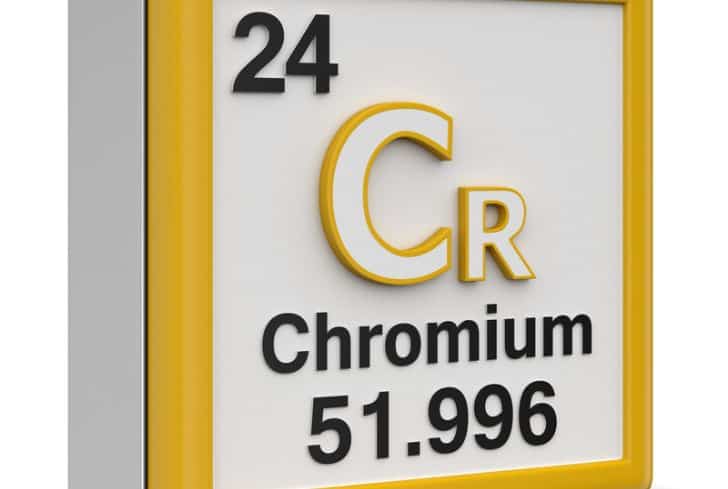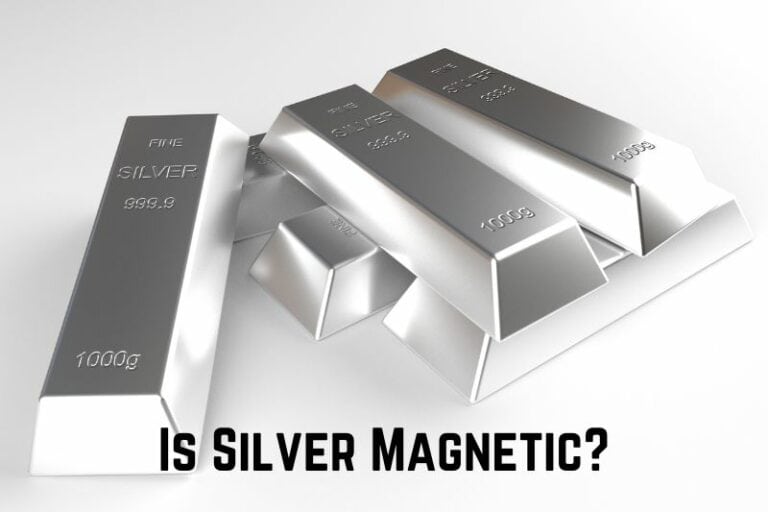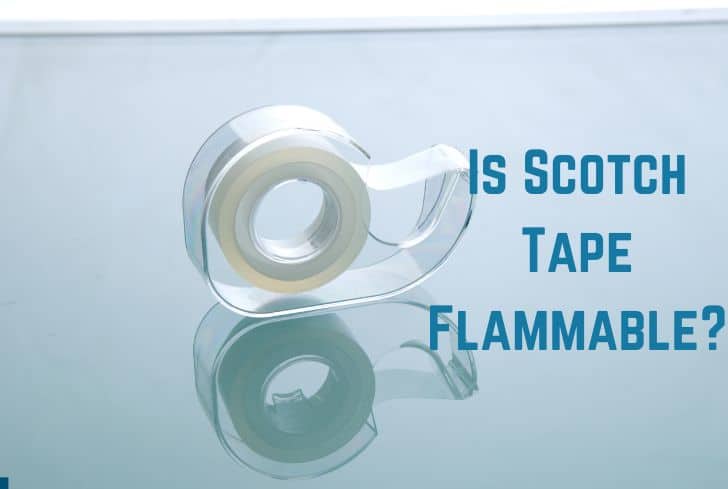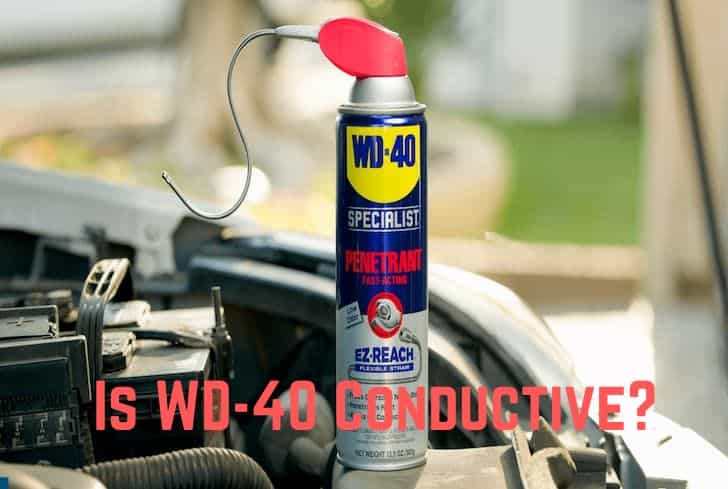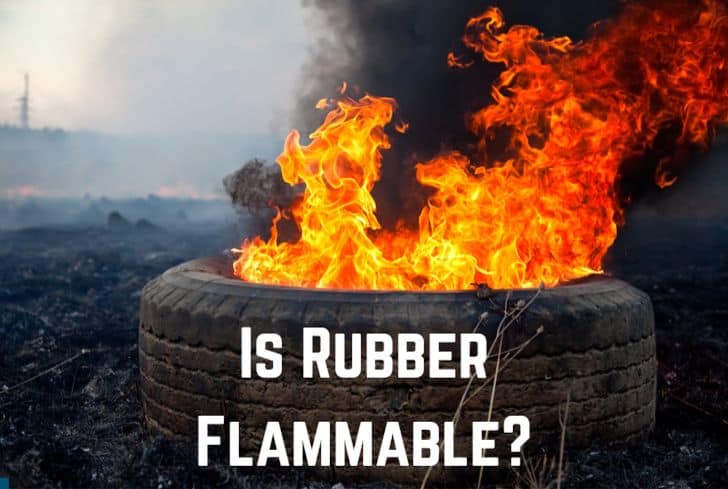Is Bleach Flammable or Explosive? (Answered)
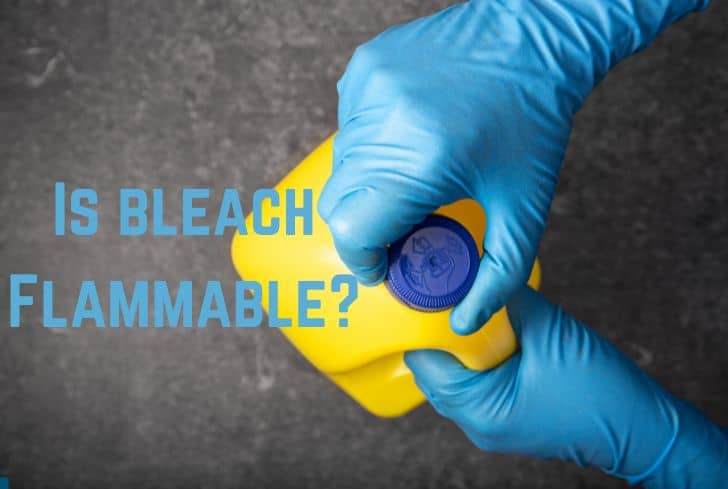
Bleach is a generic name for chemical products that are used to remove stains from fabric or to whiten it. In most cases, this chemical is a diluted version of sodium hypochlorite, which is also known as liquid bleach. Besides whitening fabric, bleach is also used for its bactericidal properties.
Have you ever wondered if bleach is flammable or explosive? In this article, we are going to discuss just that. We will begin by learning about bleach and its different types. Then we will discuss the possible dangers of bleach. Finally, we will talk about the precautions needed when using bleach.
Read: Is Silver Flammable?
Is Bleach Flammable or Explosive?
No. Bleach is a non-flammable liquid. Neither bleach variants (chlorine and non-chlorine) catch fire or burn on their own. However, most bleaches have oxidizing properties that can cause a fire to burn more intensely and spread faster. Mixing bleach with other chemical products is also dangerous.
To create and sustain fire, three components are required: fuel, oxygen, and heat. When we are talking about flammability, we are referring to the fuel component. However, even if a substance is not flammable, it can contribute to the other two components (oxygen and heat), and ultimately help the fire.
Heating or boiling bleach can produce chlorates, which are strong oxidizers that can lead to fire or explosion. Both chlorine-based and non-chlorine bleach has oxidizing properties, therefore, it is not advisable to heat them.
Main Types of Bleach
Bleach is a chemical product used to remove stains from fabric or to whiten it. It is used both domestically and industrially for a wide range of purposes from bleaching wood pulp to killing weeds.
Bleach is often a diluted version of sodium hypochlorite, more specifically called liquid bleach. Bleach reacts with colored organic compounds (such as natural pigments) and turns them colorless.
There are mainly two types of bleach:
- Chlorine-based Bleach: This is the most common type of bleach, and it is used for both household and industrial purposes. It is usually made up of sodium hypochlorite (NaClO), used as a 3-6% solution in water. This bleach is used to disinfect hard surfaces in bathrooms and kitchens, whiten laundry, and keep swimming pools clean.
Bleaching powder is another form of chlorine-based bleach, and it is composed of calcium hypochlorite (Ca(ClO)2). It is sold as a powder or as white tablets and is slightly more stable than sodium hypochlorite.
- Non-Chlorine Bleach: This type of bleach is made up of peroxides such as hydrogen peroxide, sodium perborate, sodium percarbonate, etc. This is also known as “color-safe bleach” or “oxygen bleach.”
It is characterized by the peroxide chemical group, meaning that two oxygen atoms are connected by a single bond. This bond is easily broken and leads to very reactive oxygen species. These become active agents of bleach.
Both the variants discussed above are oxidizing agents, that is, they are chemicals that remove electrons from other molecules.
However, some bleaches are also reducing agents, meaning that they donate electrons. Sodium dithionite is a popular reducing bleach, which is used to bleach wood pulp, leather, and clay.
What Happens When Bleach is Heated?
While bleach itself is not flammable, it has oxidizing properties which can cause a fire to burn more intensely and spread quickly. Both chlorine-based and non-chlorine bleach can work as oxidizing agents that can potentially worsen a fire hazard. This is especially true when they are mixed with other chemicals.
Chlorine-based bleach is usually made up of sodium hypochlorite that is diluted in water. It is most often used as a cleaning product in households. In general, this kind of bleach is not flammable. However, upon heating, it can release chlorates, which are oxidizing agents that can worsen a fire.
Non-chlorine bleach is usually made up of hydrogen peroxide, which is also an oxidizer. This type of bleach can make the fire burn much more intensely. Therefore, you should never heat bleach.
Is Bleach a Fire Hazard?
Bleach in itself is non-flammable. However, it has oxidizing properties which can turn into a possible fire hazard. Mixing bleach with other chemical products such as ammonia can also cause reactions that might turn into a fire hazard. Besides fire, bleach also poses other risks.
Most household bleach is made up of heavily diluted sodium hypochlorite. This liquid, in general, is not flammable. However, all variants of bleach have oxidizing properties.
This means that while they may not burn, they will contribute to the fire burning more intensely or spreading more quickly. When you heat up or boil bleach, it produces chlorates, which are oxidizing agents that can worsen the fire.
Mixing bleach with other chemicals like ammonia is also quite dangerous. When bleach and ammonia react, they produce toxic chloramine gas. This can burn the lungs. So, even if bleach doesn’t burn, mixing it with other chemicals poses other dangers.
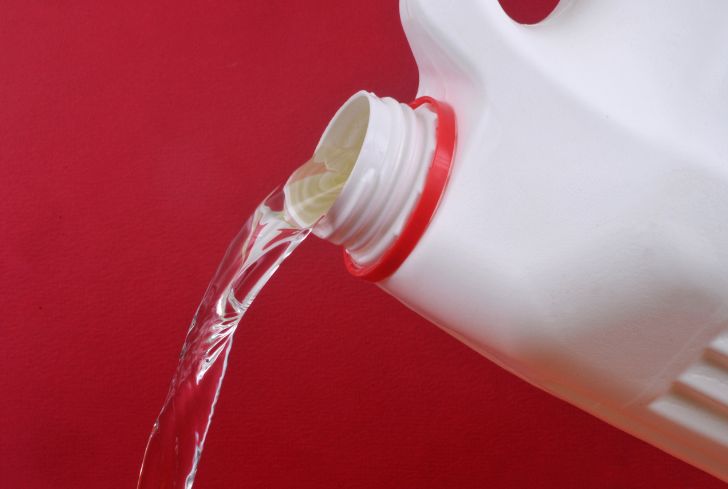
Read: Is Nail Polish Flammable?
Does Bleach Explode in Heat?
No, bleach itself is neither flammable nor explosive. But both its chlorine and non-chlorine variant has oxidizing properties that can make a fire burn more intensely or spread more quickly. This is why it is not recommended to heat or boil bleach. Mixing bleach with other chemicals can also be dangerous.
Let us first discuss the difference between three often confused terms: flammable, combustible, and explosive. As per the definition of the National Fire Protection Association, flammable liquids have a flash point (the minimum temperature at which a liquid gives off vapors that could ignite) below 100°F. These include diesel fuel, motor oil, etc.
Combustible liquids, on the other hand, have a flash point above 100°F. These include gasoline, alcohol, etc. An explosive substance (not only liquid) is anything that has the potential to explode.
Bleach in itself is not flammable. The liquid bleach we use in homes for bleaching laundry and disinfecting areas is usually a diluted version of sodium hydrochloride. This can not burn by itself.
However, heating or bleach can produce chlorates. These are strong oxidizers that can lead to fire or explosion. The non-chlorine variant of bleach is usually made of peroxide, which is again an oxidizer and can contribute to a fire.
Therefore, while bleach is not exactly a fuel, it can be a contributing factor (heat or oxygen) in the fire, possibly making it worse.
Is Bleach Toxic?
Yes, bleach can be toxic in multiple ways. The level of toxicity depends on the chemicals present and their concentration. The ingestion of liquid bleach, the inhalation of its flumes, or its contact with skin/eyes can all be extremely dangerous. Mixing bleach with other chemicals also causes dangerous reactions.
Ingestion of bleach will lead to severe damage to the esophagus and the stomach, and it can lead to death. Physical contact of bleach with eyes/skin can cause irritation, drying, and potential burns.
Inhalation of bleach fumes can also damage the lungs. This is especially true when bleach is mixed with other acids or vinegar. Their reaction produces highly toxic chlorine gas, which can cause severe internal and external burns.
Similarly, mixing bleach with ammonia produces chloramine gas, which is toxic and can burn the lungs. Combining bleach with hydrogen peroxide is also dangerous, as their exothermic reaction can make the contents splatter, possibly causing skin and eye damage.
Therefore it is always important to wear protective gear when working with bleach. Besides humans, bleach can also harm the products upon which we use the chemical, which is what we will discuss below.
Is Bleach Corrosive?
Yes, bleach can have corroding effects. It not only poses health hazards (irritating or burning skin/eyes) but can also harm the products upon which we use the chemical, such as clothes. It also corrodes metals. Finally, mixing bleach with other chemicals can multiply its harmful effects.
Bleaches not only turn pigments colorless but they can also react with the neighboring elements. So they damage fibres, cloth, and leather. They can also be harmful to dyes such as denim’s indigo.
Besides these, as discussed above, bleach can pose serious health hazards. Physical contact with skin/eyes, inhalation, or inhalation can all be severely harmful. Bleach also corrodes or “eats” up metal.
Read: Is olive oil flammable?
What Safety Precautions Should One Take With Bleach?
Given the harmful nature of bleach, consider following these safety precautions:
- For cleaning surfaces, use soap and water. Bleach is a disinfectant that should only be used when you need to kill bacteria, viruses, etc.
- Learn how to dilute the bleach properly.
- Read the manufacturer’s instructions to follow the proper guidelines. Do not use the product if the label is not readable.
- Never mix bleach with other products as it can cause dangerous reactions.
- Always use bleach in a well-ventilated area, so that the fumes will not harm you.
It is always best to use a safer alternative whenever possible.
Conclusion
In this article, we discussed whether bleach is flammable or not. While bleach itself does not burn, its oxidizing properties can make a fire burn more intensely or spread quickly. Mixing bleach with other chemicals can also be dangerous. Finally, bleach is a toxic product that can be harmful to humans and other surfaces, so it should always be used with caution.


